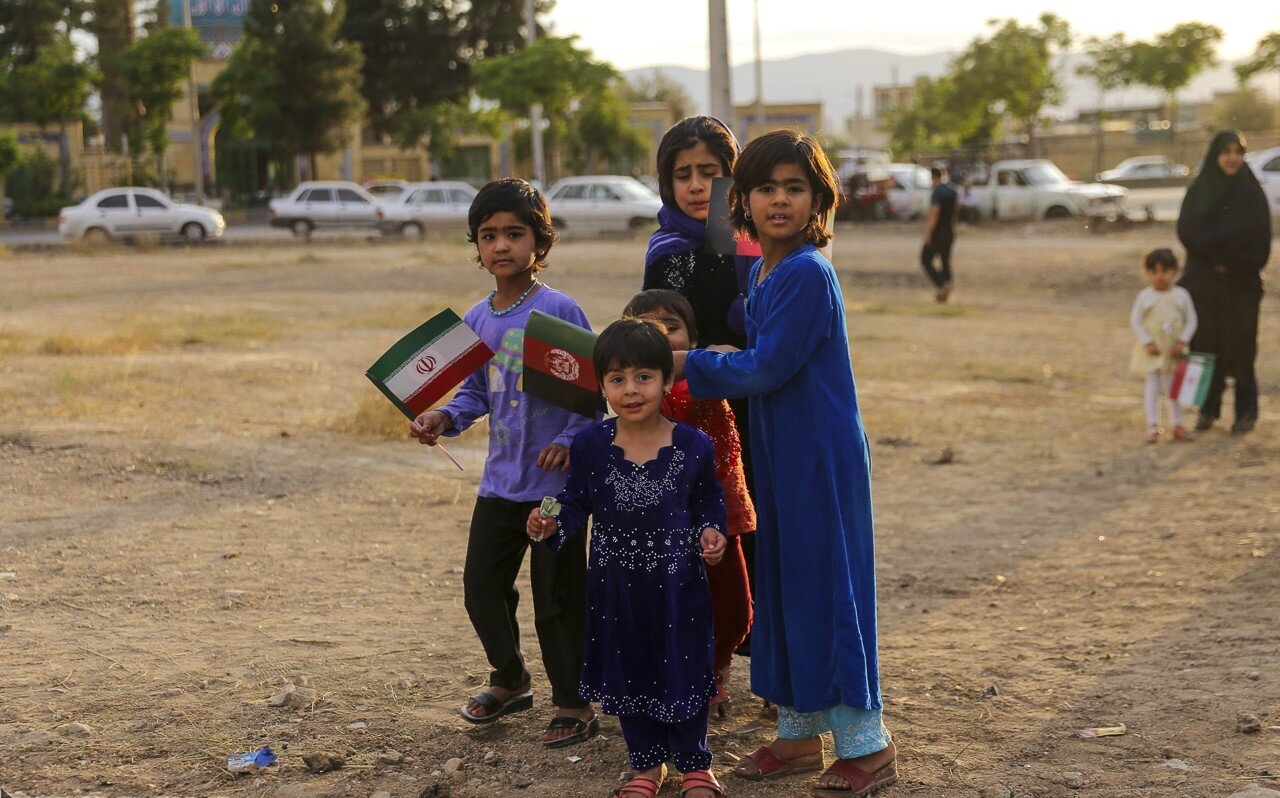TEHRAN – Robin Nandy, the representative of the United Nations Children's Fund (UNICEF) in Iran, has said the country’s comprehensive program for the protection of refugee children is encouraging.
Making investments in programs and services to better care for and support children affected by migration and asylum will reduce costs in the future, he added.
He made the remarks in a meeting with Ali Kazemi, the deputy justice minister, IRNA reported.
Emphasizing the important role of non-governmental organizations in supporting refugee and immigrant children and teenagers, Nandy expressed hope that holding educational workshops will lead to the promotion of children's rights and justice for children.
Kazemi, for his part, said some 63 percent of Afghan refugees have selected Iran as their destination and the government does its best to settle the refugees with dignity.
The situation of non-Iranian children and adolescents and their families who have sought refuge in the Islamic Republic of Iran due to migration or injuries caused by unforeseen events and natural disasters or issues such as war has always been of concern to Iran, IRNa quoted Kazemi as saying.
It is expected that international organizations and other countries will also provide more assistance in this field in line with their humanitarian responsibilities and duties arising from human rights conventions, he added.
The Law on the protection of children and adolescents considers protection as the right of all people under the age of 18 who live within the borders of the Islamic Republic, Kazemi highlighted.
“According to the law, equal and non-discriminatory treatment in terms of color, race, religion, language, health, gender, ethnicity, nationality, and family status is the right of every child living in Iran.
The indisputable principle that governs all measures related to children and various legal protections have been considered for non-Iranian children and adolescents.”
The Islamic Republic of Iran is currently host to one of the largest and most protracted refugee populations in the world, the majority of whom are Afghan refugees.
The country is home to over 800,000 registered refugees and some 2.6 million undocumented Afghans. Today, more than 500,000 Afghan children- including undocumented Afghans and those who have newly arrived in Iran following the Taliban-takeover-are benefitting from Iran’s inclusive education policies, one of the most progressive in the world.
Many of the refugees living in Iran are second and third-generation, according to the United Nations High Commissioner for Refugees (UNHCR).
Iran has spent more than $352 million in the current school year that started on September 23 on the education of Afghan students.
Over 670,000 students of Afghan nationals are studying in Iran, and the cost of educating these students is more than $352 million, IRNA reported.
In the current school year, $17 million of international aid and $335.631 million dollars from internal sources have been spent on the education of Afghan nationals.
However, international organizations have paid less than 3.9 percent of the cost of education for Afghan students in Iran in the last two years.
Leader of the Islamic Revolution Ayatollah Seyyed Ali Khamenei issued a decree in May 2015 that allows all foreign nationals, even those who have no identification and are living in Iran illegally, to attend schools in the country.
Relying on moral and Islamic principles, the government of the Islamic Republic of Iran has created equal conditions in benefiting from educational opportunities for Afghan students.
In the previous school year, some 556,000 Afghan students studied in Iranian schools.
Afghan students are currently studying in 6,000 schools across Iran, of which 88 schools are being built with the participation of international organizations.
The literacy rate among refugees has increased significantly in recent decades. So that the literacy rate of Afghan immigrants in Iran is higher than the number of literate people in Afghanistan, according to a report published in June 2022 by the research center of the Iranian Parliament (Majlis).
Iran is among the 15 successful countries in attracting international university students, according to Mohammad Javad Salmanpour, the deputy head of the Organization for Student Affairs.
The education of foreign students in Iran has grown significantly compared to previous years, even last year, it has doubled, he said.
Iran has the ability and capacity to have more than 250,000 foreign students by 2026, he stated.
Ivo Freijsen, Representative for the United Nations High Commissioner for Refugees in Iran, has said Iran is an exemplary country that has acted very well in hosting refugees and has been hosting them for a long time.
Forty years have passed since Iran started hosting them [refugees]. As we have always said, Iran has had positive approaches toward refugees, we appreciate that, and we are honored to support Iran's efforts, he said in an exclusive interview with Iran Newspaper published on September 4, 2022.
In fact, Iran provides wide-ranging services for refugees such as basic healthcare services, education, and vocational training.
During the COVID-19 pandemic, those who were in Iran, whether the ones that had passports or the ones that had documentation and were [registered] refugees, received the vaccination.


No comments:
Post a Comment